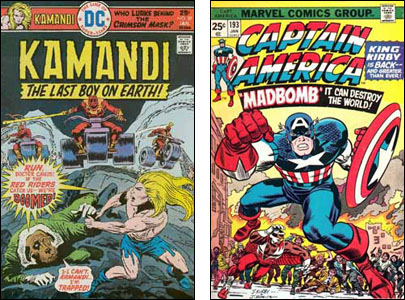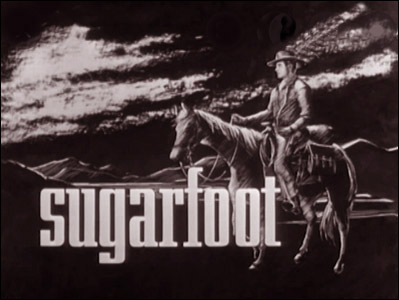Mark Coale wrote to ask…
Why did Filmation decide to do live action Saturday morning shows in the mid 1970s? I know they had done animation/live action hybrids (like Fat Albert) in the early 1970s. So why do things like Ghost Busters and the other shows?
Because CBS (or any network) wanted them and the guys at Filmation thought they could make money doing them. And I think also there's that "don't put all your eggs in one basket" principle. If any network were to suddenly think, "Let's buy less animation and more live-action," most cartoon studios didn't want to be shut out.

The first two sales I ever made to Hanna-Barbera were both live-action projects…and for a while after that, I couldn't get them to give me work on the cartoons because Joe Barbera thought of me as a live-action writer. At that time — it changed now and then — he felt live-action writers kind of automatically didn't know how to write for animation. Once he was convinced I could do both, I was a candidate for more work than if I could only do one. At the same time, he was trying to convince the networks that his studio could do both…for the same reason.
And I should also mention: Some folks in the industry who'd scold you if you said animation isn't "real television" or "real movies" the way live-action is quietly harbor a longing to work in live-action. There can be more money and more prestige and it feels glamorous to be on the set which a whole crew and actors and everything. That's some folks, not all.
Steven Elworth wants to know…
When Jack Kirby moved from Marvel to DC, did work for both overlap?
In 1970 when Jack left Marvel for DC, he sent in (from California) an issue of Fantastic Four, waited until it had arrived at the Marvel offices in New York, then phoned Stan Lee and told him it was his last issue and that he'd signed with DC. He did no more work for Marvel until 1975 when his DC contract expired and he returned to Marvel. In '75, he sent off what DC knew was his last issue of Kamandi and then started fulfilling his new Marvel contract the next day.
This gets some readers confused if they don't realize that all the comics that come out in one month weren't all written and drawn in the same month. Sometimes, one book is way ahead of another in production.
In '70 when Jack quit Marvel, they had several issues of Fantastic Four and Thor by him that were still going through the process of scripting, lettering, inking and coloring. They also had stories of The Inhumans Jack had written and drawn for a book called Amazing Adventures and a couple of Ka-Zar stories he'd drawn for Astonishing Tales, plus a couple short ghost-type stories for their fantasy comics and some covers for various titles. Most of this was released before any of his DC material hit newsstands but Marvel could have held some of it until later — and did with one Kirby issue of Fantastic Four — and DC could have released his new books for them earlier if they'd wanted to.
So there could have been a real overlap but it would not have been because Jack was working for both companies at the same time. He didn't. The overlap could have come from the publishers' decision of when to publish material they had on hand.

When Jack went back to Marvel in '75, DC had six or seven completed issues of Kamandi by Jack on the shelf and I think one or two of Our Fighting Forces. So there was an overlap there, not in terms of when Jack did the work but because of when the publishers published things. After he did his last Kamandi, he was assigned a batch of covers for various Marvel titles and he did several issues of Captain America and a lot more covers before they had him do anything else.
This is also the answer to the question someone asked me as to why Joe Kubert did the covers on the last seven issues of Kamandi by Jack. Covers then were done whenever Carmine Infantino — the publisher but he also supervised cover designs — got around to them. In this case, by the time he did, Jack was no longer working for DC.
For about six months, new Kirby work was coming out from both publishers, which might have made some think he was simultaneously working for both firms. But he wasn't.
Lastly, Kevin Krieg wrote to ask…
Enjoying high quality B&W prints of Rawhide and Wagon Train on INSP. Do you have any insight on why classic WB shows (77 Sunset Strip, Hawaiian Eye, Surfside Six, Sugarfoot, Maverick, Colt 45, Lawman, etc.) are never shown anywhere?
77 Sunset Strip, Hawaiian Eye and Lawman are all running currently on MeTV+. Here's a PDF of their current schedule.) I would imagine that channel may pick up some of the others when they feel some of their current offerings are losing audience shares.
When there's discussion of some channel picking up the reruns of some old series, there are two questions, one being whether the channel thinks its viewers will tune in to see the show. Some programs simply rerun better than others. Some programs have some appeal for that purpose because they haven't been seen in a while.
The other question then becomes whether the outfit that owns the show can provide decent prints or all or most of its episodes. Sometimes, they can't. I don't know if the situation has changed but a few years ago, whoever owns My Living Doll did not have decent copies of about half the episodes. It can cost a lot of money to restore shows for rerun purposes and there are probably a lot of old shows where they don't have decent prints and/or don't think it's worth the investment to restore what they have.

I think though Kevin that the shows you're asking about may all be available if/when someone wants to run them. Years ago, I used to say that writing with programming suggestions to CBS, NBC and ABC was a waste of time. They were reaching so many viewers than the interests of a few didn't matter to them. But these days, a lot of cable channels — the kind that run the kind of shows that interest you — might be highly responsive to a few dozen letters. If you can get rally enough Sugarfoot fans to write in, it might make a difference.
And that's it for this time.
